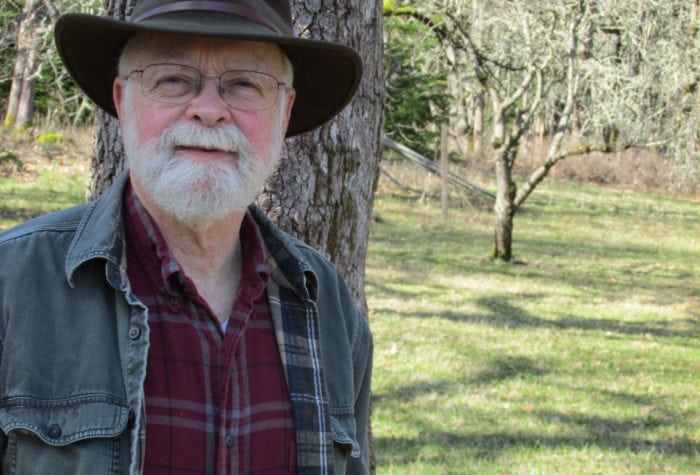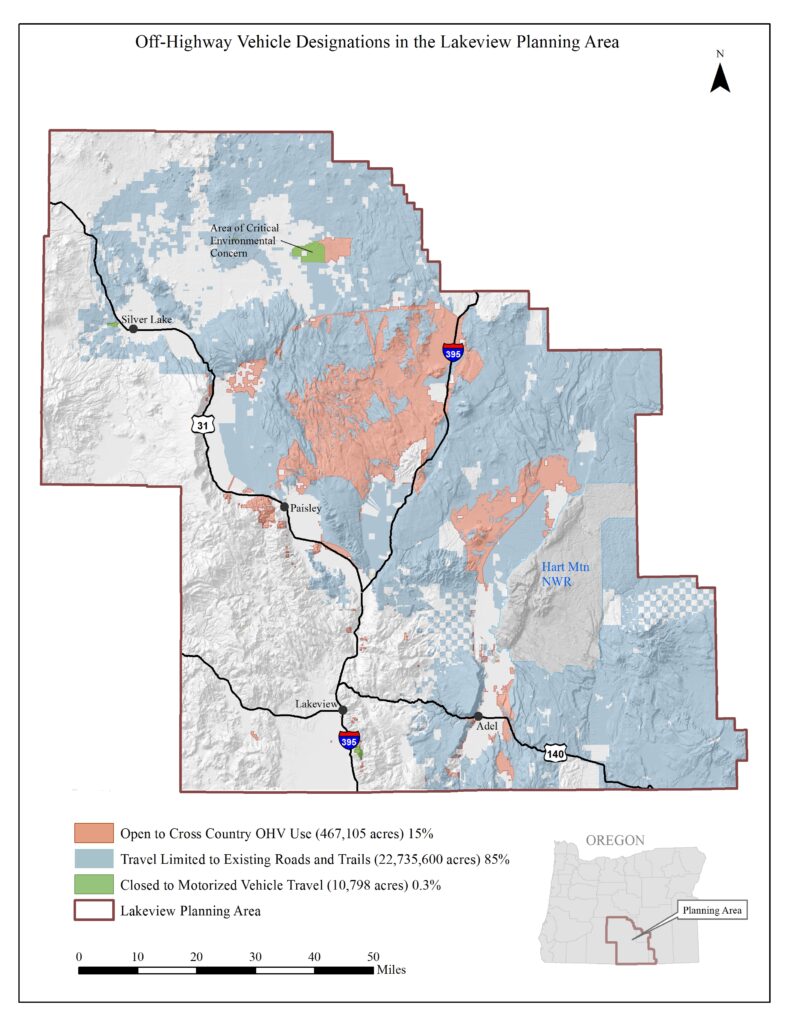Off-Road Vehicle and Travel Management
Sage Brown Website
The Scope:
The Lakeview Resource Management Plan (RMP) will establish where, when and how off-road vehicles (ORVs) are allowed to operate on Bureau of Land Management (BLM) lands.
What does the current management of ORV use on BLM lands look like?
The BLM is required to classify all lands within a planning district into one of three ORV designations: open, closed, or limited.
The official definition for each designation:
- Open: An open area is where all types of vehicle use are permitted at all times in the area, subject to operating regulation and vehicle standards.
- Limited: A limited area is where there are restrictions at certain times, in certain areas and/or to certain vehicular use. Generally, these restrictions fall into one of the following categories: number of vehicles, types of vehicles, time or season of use, permitted or licensed use only, use only on existing roads and trails, use only on designated roads and trails.
- Closed: A closed area is where off-road vehicle use is prohibited.
Where can ORVs currently operate?
ONDA’s analysis found that more than 99.5% of the lands in the planning area are available for ORV travel, categorized as either “limited” (existing roads and ways) or “open” (off-road) to motorized use. The majority of public lands in the district fall into the “limited” or “open” categories described above. Changes were implemented in 2015 to protect sage-grouse habitat per the Greater Sage-grouse Approved Resource Management Plan Amendment that reclassified 2 million acres of essential sage-grouse habitat from open to limited to conserve the species. However, large areas outside of sage-grouse habitat remain open to cross-country ORV travel, and the fate of the changes made as part of the sage-grouse plan remains unclear.
What are some of the concerns regarding ORV use on public lands?
Where not properly managed, ORVs can fragment wildlife habitat, impact soils and plant species, increase erosion and spread invasive species across the landscape. Approximately 44% of the areas currently designated “Open to Cross Country ORV Use” are within Lands with Wilderness Characteristics. The Council on Environmental Quality (CEQ) stated in a 1979 report that ORVs have “damaged every kind of ecosystem found in the United States,” and since then there has been a flood of research produced on the negative effects of off-road vehicle use. The number of ORV users on public lands has dramatically increased in recent years. At the same time, advancements in technology have allowed motorized recreationists to reach increasingly remote areas. Both factors are leading ORV use to have a greater impact on the ground, a leading concern in the preservation of wilderness-quality landscapes and wildlife habitat.
ONDA’s take:
The BLM should restrict ORV use to designated routes, eliminating cross-country travel and protecting intact wildlife habitat, watersheds and cultural resources. By restricting ORVs to designated routes, the BLM can limit impacts to these irreplaceable resources and healthy ecosystems while still providing a rich experience for motorized recreationists. As noted in BLM’s guidance to field offices in 2007, “continued designation of large areas that remain open to unregulated ‘cross-country travel’ is not a practical management strategy.” The BLM should implement this guidance in the Lakeview Resource Management Plan.

